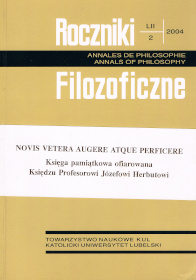On Communication with God
Abstract
A particular kind of communication with God is the linguistic form of prayer. The theoretical analysis of each act of communication calls for a reference to the applied theory of communication. In reference to prayer it is appropriate, inasmuch as we accept the standpoint according to which the relations between God and man should be described in line with the achievements of science (A. Peacocke). Thus Peacocke describes the communication between God and man. His description is based on the assumption about God's self-limitation to adjust to His recipient. This assumption results from the acceptance of the relay theory of communication. According to this theory, the contents of the recipients' message (in this case God) must be reproduced by the recipient (in this case man). This theory is inappropriate to describe the acts of communication between God and man. The theory of relevancy is more appropriate for the description of this kind of relation of communication. According to this theory, it is the recipient that decides about the contents of the message. The theory does not require that self-limitation should be assumed when describing prayer as an act of communication with God. According to this theory, God, being the addressee of the acts of prayer fully understands the contents and intentions of the message. Man (the sender) may only hope that he has appropriately performed an act of communication.
Copyright (c) 2004 Roczniki Filozoficzne

This work is licensed under a Creative Commons Attribution-NonCommercial-NoDerivatives 4.0 International License.





